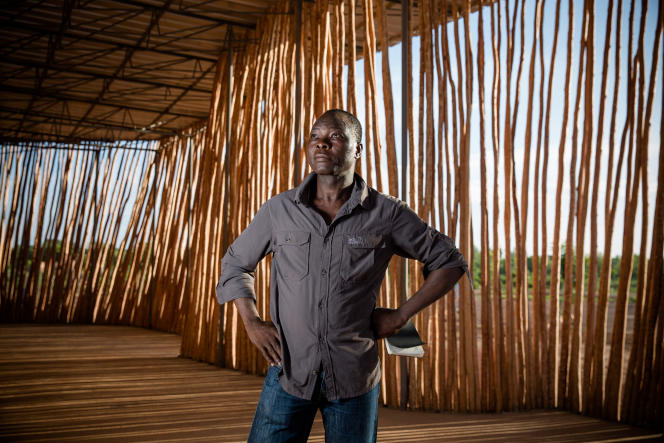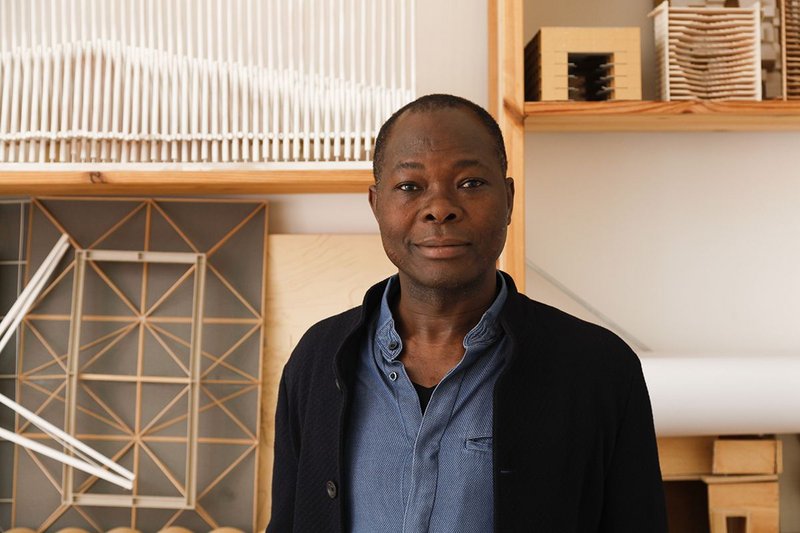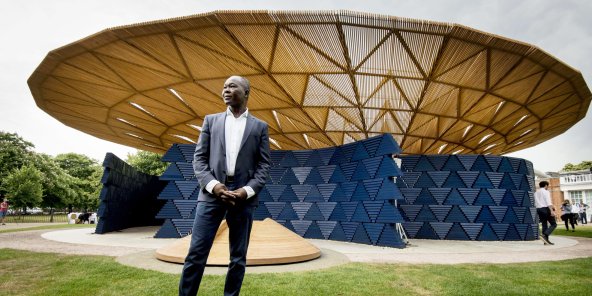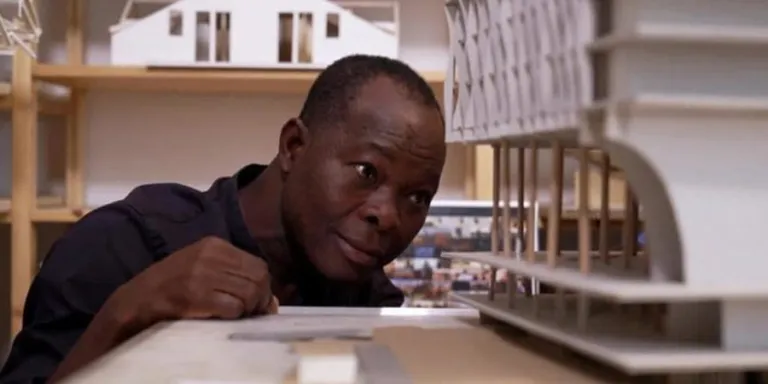
What happens when passion, tradition, and innovation intersect? For Diébédo Francis Kéré, the answer is a groundbreaking journey from the village of Gando in Burkina Faso to becoming the first African to win the prestigious Pritzker Architecture Prize in 2022. His story is not merely about constructing buildings but about building hope, fostering collaboration, and uplifting communities.
Kéré’s approach to architecture transcends design; it’s about empowerment. By blending local materials with modern techniques, he creates sustainable spaces that withstand the elements and serve the people. His rise to prominence is as awe-inspiring as his creations—spanning schools, cultural centers, and medical facilities across continents. From the bustling streets of Berlin, where he honed his craft, to the arid landscapes of Burkina Faso, where his vision takes shape, Kéré’s work exemplifies resilience and ingenuity.
Let’s dive deeper into the life of this trailblazing architect whose designs redefine what’s possible when we blend tradition with innovation. Through his vision, Kéré reminds us that architecture isn’t just about structures—it’s about transforming lives.
From Gando to Greatness

It all started in Gando, a small village in Burkina Faso, where Diébédo Francis Kéré was born in 1965. As the first son of the village chief, Kéré’s father harbored a visionary dream: his eldest child would be educated to read and write letters—a rare privilege in their community. This dream set Kéré on a journey that would change his life and the lives of many others. At just seven years old, Kéré left his family to live with his uncle in a distant city where he could attend school.
Growing up, Kéré experienced firsthand the challenges of education in under-resourced communities. Classrooms were stiflingly hot, poorly lit, and barely functional—conditions that deeply influenced his architectural philosophy years later. After completing his initial education, he trained as a carpenter and secured a scholarship to study in Germany under a development aid program.
Arriving in Berlin in 1985, Kéré began an apprenticeship and later pursued formal studies in architecture at Technische Universität Berlin. His time in Europe expanded his perspective while intensifying his resolve to give back to Gando. Even as he studied, Kéré laid the groundwork for a transformational project: building a school for his village. By merging traditional materials with innovative techniques, he envisioned functional, sustainable, and reflective spaces of the community’s spirit.
Kéré’s early experiences in Gando didn’t just shape his identity—they ignited his mission to make architecture a tool for empowerment and education. His journey from a village child to an architect of global acclaim is a testament to the power of dreams and determination.
Read: Nigerian Teacher Shortlisted for $1 Million Global Teacher Prize
A Legacy of Innovation and Empowerment

Diébédo Francis Kéré’s architectural contributions stand as powerful symbols of innovation, sustainability, and community-driven design. His first major project, the Gando Primary School, completed in 2001, was groundbreaking—not just for its architectural ingenuity but for how it mobilized his village. Using locally sourced materials like compressed mud bricks, Kéré designed a structure that addressed the harsh Burkinabé climate with a raised roof and natural ventilation. This design created a cool, inviting learning environment starkly contrasting the concrete structures typical of the region. The Gando Primary School earned Kéré the prestigious Aga Khan Award for Architecture in 2004, launching his career onto the global stage.
Kéré’s approach centers on community involvement. In Gando, he drew construction plans in the sand to communicate his vision to illiterate villagers. This inclusivity ensured a sense of ownership among residents, who actively participated in the building process. Neighboring villages were inspired to adopt similar methods, amplifying the project’s impact.
Beyond Burkina Faso, Kéré’s architectural reach spans continents, including Mali, Kenya, Uganda, and Germany projects. Notable works include the Serpentine Pavilion in London (2017), where his design celebrated the shade-giving trees of his childhood, and the Centre for Earth Architecture in Mali, which blends ancient techniques with modern needs.
Kéré’s work is celebrated for its focus on sustainability. For instance, his design for the Gando Secondary School integrates natural ventilation and innovative cooling systems, reducing the need for electricity. These designs address environmental challenges while remaining accessible and practical for underserved communities.
In 2022, Kéré became the first African architect to win the Pritzker Architecture Prize, often dubbed the “Nobel Prize of Architecture.” His achievements demonstrate that architecture can go beyond aesthetics—it can transform lives, uplift communities, and honor cultural heritage.
Overcoming Challenges, Building Resilience
Diébédo Francis Kéré’s journey to global architectural acclaim was anything but smooth. His life exemplifies resilience in the face of personal and professional challenges. Growing up in Gando, Burkina Faso, in a village lacking basic infrastructure, Kéré’s early experiences were marked by scarcity. At just seven years old, he left home to attend school in a distant city because his village had no educational facilities. These formative experiences sparked his lifelong commitment to addressing inequities through architecture.
One of his earliest challenges came during the construction of the Gando Primary School. Building with mud bricks, a material often dismissed as primitive, invited skepticism. However, Kéré combined traditional techniques with modern engineering, proving that local materials could create enduring, climate-resilient structures. His perseverance paid off, transforming doubters into collaborators.
Financial constraints were another significant hurdle. Kéré initially funded the Gando Primary School through modest donations from friends and supporters in Germany. He later founded the Kéré Foundation, enabling him to sustain and expand his vision for community-led development.
Even as he gained international recognition, Kéré faced the challenge of bridging two worlds—his roots in Gando and his professional life in Germany. This duality required navigating cultural, economic, and logistical complexities. Yet, Kéré’s ability to blend local knowledge with global practices has become his signature strength.
Overcoming Challenges, Building Resilience
Diébédo Francis Kéré’s journey to global architectural acclaim was anything but smooth. His life exemplifies resilience in the face of personal and professional challenges. Growing up in Gando, Burkina Faso, in a village lacking basic infrastructure, Kéré’s early experiences were marked by scarcity. At just seven years old, he left home to attend school in a distant city because his village had no educational facilities. These formative experiences sparked his lifelong commitment to addressing inequities through architecture.
One of his earliest challenges came during the construction of the Gando Primary School. Building with mud bricks, a material often dismissed as primitive, invited skepticism. However, Kéré combined traditional techniques with modern engineering, proving that local materials could create enduring, climate-resilient structures. His perseverance paid off, transforming doubters into collaborators.
Financial constraints were another significant hurdle. Kéré initially funded the Gando Primary School through modest donations from friends and supporters in Germany. He later founded the Kéré Foundation, enabling him to sustain and expand his vision for community-led development.
Even as he gained international recognition, Kéré faced the challenge of bridging two worlds—his roots in Gando and his professional life in Germany. This duality required navigating cultural, economic, and logistical complexities. Yet, Kéré’s ability to blend local knowledge with global practices has become his signature strength.
Read: Meet Tope Awotona, the CEO and Founder of Calendly
A Blueprint for Inspiration

Diébédo Francis Kéré’s journey from a small village in Burkina Faso to the pinnacle of global architecture is a testament to the transformative power of purpose and determination. Through his groundbreaking designs, Kéré has redefined what architecture can achieve and inspired a generation to dream beyond boundaries. His work is a vivid reminder that innovation flourishes when rooted in community, tradition, and sustainability.
As Diébédo Francis Kéré’s continues to shape skylines and empower communities, his legacy grows as a beacon for aspiring architects and changemakers worldwide. Whether transforming rural schools or designing cultural landmarks, his story proves that even the most ambitious dreams can be realized with resilience, creativity, and collaboration.
Which part of Kéré’s remarkable journey resonates most with you? Share your thoughts, and join us in celebrating a visionary whose work transcends borders and generations.
